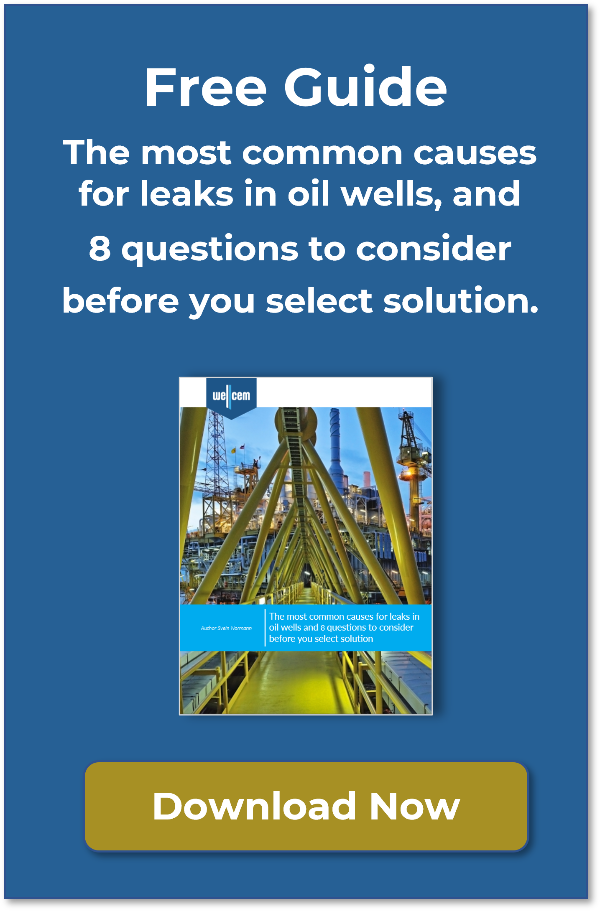Control Line Sealing
What is Control Line sealing?
Many wells have a hydraulic control line running down along the casing or tubing for various reasons, it be controlling a valve or sleeve or other equipment.
Sometimes these control lines develop a leak and can no longer be used, sometimes they are just not needed anymore.
These control lines can run hundreds and often thousands of meters down the well.
A faulty control line can be a source of an undesired leak. In an abandonment phase the control line can be a source or a conduit for pressure migration.
Wellcem have performed several successful jobs
Why is this a challenge?
A leaking control line is mostly useless and can be a source of leak and pollution. More problematic is that a control line at some stage will be a possible leak path for pressure moving from one depth to another. It can also be a breach of well control barrier in a well.
Download Free Guide: The most common causes for leaks in oil wells, and 8 questions to consider before selecting a solution
What are the options?
Pulling the line up is normally not possible, repairing it is very difficult, so the best option is to seal it up to prevent any migration of fluids and undesirable pressure build up.
To seal a deep mostly very small line is difficult, you would need a very low viscosity fluid to be able to pump it into for example a 4000 m long ¼” control line with an ID of maybe 4-5 mm.
The line will also run across low temperature sections at and around the seabed on offshore wells making most fluids very viscous and not feasible to pump.
This is how we seal Control Lines
The Wellcem resin has extremely low viscosity and even at low temperatures can the resin be pumped through a small control line and thousands of meters down in a well.
It is normally a one-man job easily done in a few hours with very little equipment and chemicals. The chemicals are normally mixed on site and only a few liters are normally needed. The surface lines are flushed clean after the resin has been pumped to ensure no resin is left at surface.
The carefully controlled curing time allows for secure placement and the control line can normally be tested the next day to ensure it holds and the line is secured.
The testing is normally done by the same engineer with the same equipment that has been used for pumping the resin into the line. The pressures test is recorded and submitted to the operator together with a full end of job report.
If you want to get more insight to resin-based solutions like ThermaSet for Control Lines, click here:
You may also want to learn more about other areas of application like Plug & Abandonment and more, just scroll down ->
Applications for the Wellcem solution
Application
Plug & Abandonment
The primary objective is to ensure that no leaks to surface exist and that no formation fluid migration occurs even many years after the well has been abandoned.
Application
Zonal Isolation
Most oil and gas wells have different zones. Zonal isolation seeks to segregate undesirable intervals from production.
Application
Sustained Casing Pressure
Regardless of definition, either SCP, SAP or CCA, it is a well integrity issue with a failed barrier. It requires management or workover.
Application
Casing Leak
Casing leaks are often a result of leaking casing threads, burst casing from pressure, corrosion or from casing wear due to extended periods of drilling operations.
Application
Lost Circulation
Lost Circulation means you are losing your circulation of fluids off to a low-pressure and permeable formation somewhere in the well.
Application
Control Line
Many wells have a hydraulic control line running down along the casing or tubing. Control lines can develop an undesired leak.




